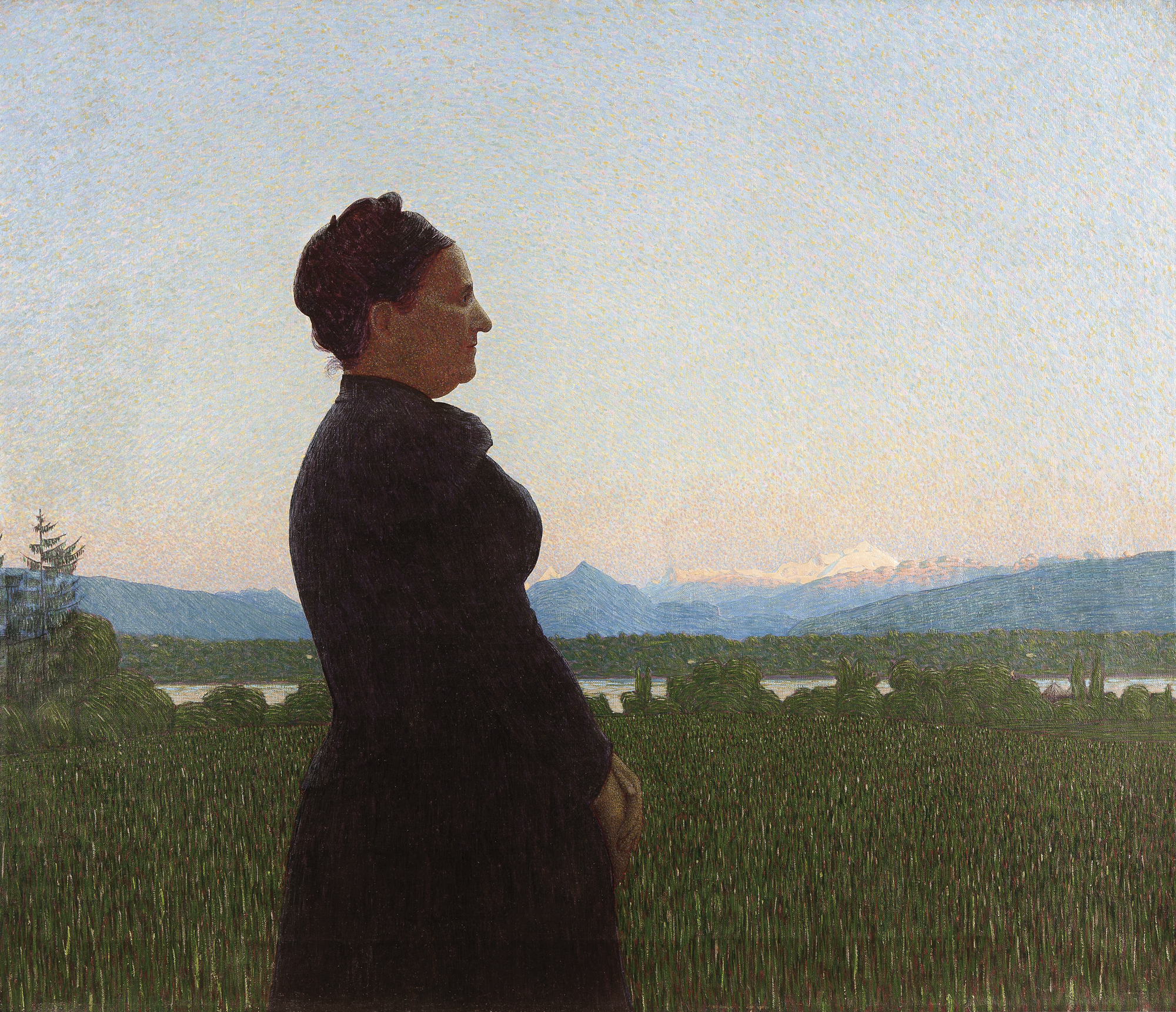Born in Geneva in 1862, Alexandre Perrier, a contemporary of Cuno Amiet and Ferdinand Hodler, greatly contributed to the representation of Art Nouveau painting in Switzerland. Yet his work remains largely unknown, even though he was one of the most eminent Swiss artists at the turn of the 19 th century.
A landscape painter and heir to the Geneva School embodied by François Diday and Alexandre Calame, Perrier begins training in Mulhouse as a fabric designer. In 1891 he settles in Paris, where he is a regular presence in the city’s literary and artistic circles, and practices fashion design. Back in Geneva in the closing years of the 19th century, he devotes himself solely to painting. Influenced by the Neo-Impressionists he has discovered in Paris, Perrier starts out by painting works that owe a great deal to the Pointillism of Georges Seurat and the Divisionism of Giovanni Segantini, adopting the latter’s fragmented brushstroke. His creations become truly original when he frees his palette from painting from life. Perrier now dissociates colour and line, anchoring his approach in modernity.
Although his means of expression will evolve throughout his career, he displays great coherence in his selection of subjects. For some forty years, he invariably recreates the same landscapes, for the most part the shores of Lake Geneva, Mount Salève, Praz-de-Lys and the powerful Mont Blanc massif. Through these depictions, he invites us to ponder and contemplate the sublime that is part of nature. Late in life, superimposing independent colour surfaces over a network of white lines, Perrier moves still further away from realist representation in favour of symbolic and cosmic views of nature.
Meeting with success in his lifetime, he takes part in the artistic events of his day, starting in the early 1890s. He exhibits at the Salon des Indépendants, for example, and later at the 1896 National Exhibition in Geneva, is awarded the bronze medal at the 1900 World’s Fair in Paris, and shows at the Vienna Succession beside Amiet and Hodler in 1901. Perrier died suddenly in 1936, just one year before a retrospective devoted to his work that was mounted at the Musée Rath and Bern’s Kunsthalle. In 2008 and 2009, Kunstmuseum Solothurn and Geneva’s Musée d’art et d’histoire also put together a retrospective of his work.
A landscape painter and heir to the Geneva School embodied by François Diday and Alexandre Calame, Perrier begins training in Mulhouse as a fabric designer. In 1891 he settles in Paris, where he is a regular presence in the city’s literary and artistic circles, and practices fashion design. Back in Geneva in the closing years of the 19th century, he devotes himself solely to painting. Influenced by the Neo-Impressionists he has discovered in Paris, Perrier starts out by painting works that owe a great deal to the Pointillism of Georges Seurat and the Divisionism of Giovanni Segantini, adopting the latter’s fragmented brushstroke. His creations become truly original when he frees his palette from painting from life. Perrier now dissociates colour and line, anchoring his approach in modernity.
Although his means of expression will evolve throughout his career, he displays great coherence in his selection of subjects. For some forty years, he invariably recreates the same landscapes, for the most part the shores of Lake Geneva, Mount Salève, Praz-de-Lys and the powerful Mont Blanc massif. Through these depictions, he invites us to ponder and contemplate the sublime that is part of nature. Late in life, superimposing independent colour surfaces over a network of white lines, Perrier moves still further away from realist representation in favour of symbolic and cosmic views of nature.
Meeting with success in his lifetime, he takes part in the artistic events of his day, starting in the early 1890s. He exhibits at the Salon des Indépendants, for example, and later at the 1896 National Exhibition in Geneva, is awarded the bronze medal at the 1900 World’s Fair in Paris, and shows at the Vienna Succession beside Amiet and Hodler in 1901. Perrier died suddenly in 1936, just one year before a retrospective devoted to his work that was mounted at the Musée Rath and Bern’s Kunsthalle. In 2008 and 2009, Kunstmuseum Solothurn and Geneva’s Musée d’art et d’histoire also put together a retrospective of his work.






